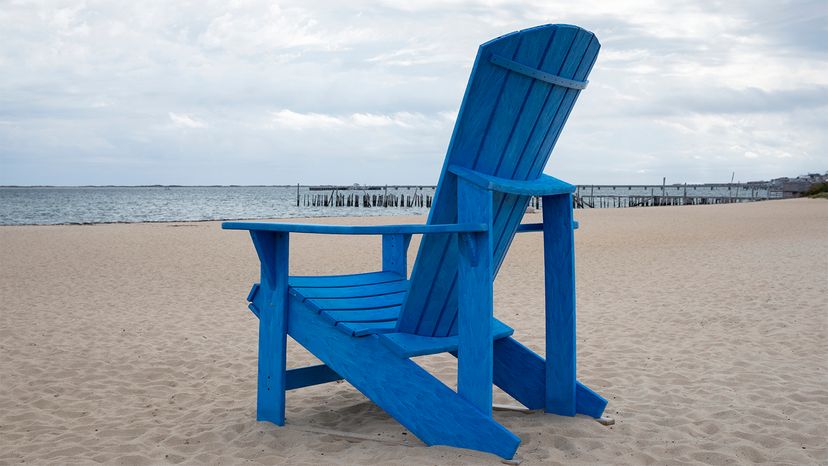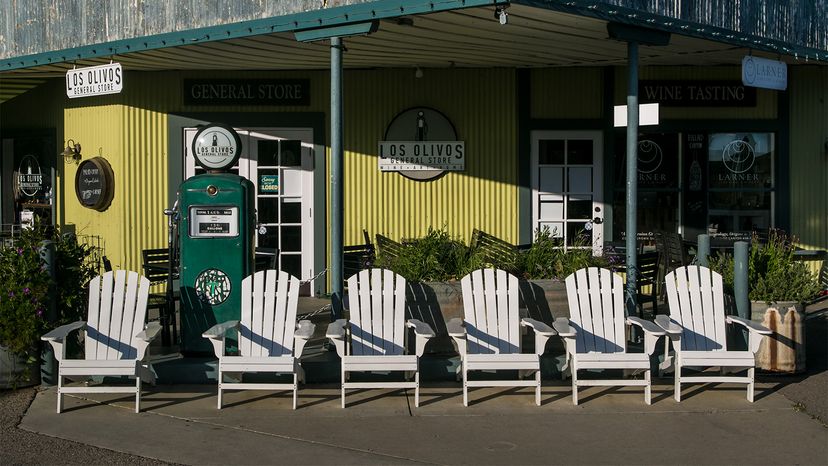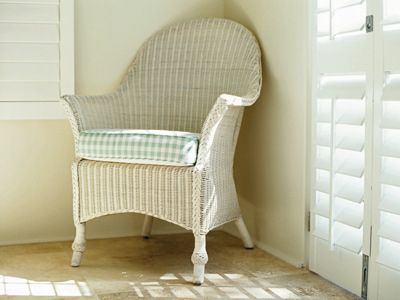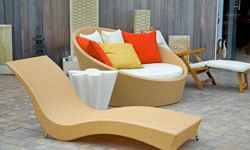An outdoor staple today, these popular perches were originally invented by Massachusetts designer Thomas Lee in the early 1900s in the small Adirondack town of Westport, New York, on the shores of Lake Champlain. Lee, who had a summer home in Westport, wanted to come up with a chair that could handle the rugged terrain of the Adirondacks. The requirements: It had to be sturdy, balanced and comfortable on everything from sandy ground to a steep hill.
Lee eventually came up with what he considered the perfect chair — with wide armrests, a high back, and a slanted seat and back made from single pieces of wood — and then brought the design to his friend, Harry Bunnell, to craft in his local carpentry shop. Bunnell began building and selling the chairs to the surrounding community, and he soon noticed how popular they were. After modifying the design to make the chair a little narrower, Bunnell patented his Westport chair design in April 1904.
During the next 20 years or so, Bunnell went on to develop a successful Westport chair-making business, leaving his signature on each chair he made. The Westport chair began growing in popularity because of its durability and high comfort level, but as the years passed, the design began to change into the modern Adirondack chair we know today.
Both the Westport chair and the newer Adirondack chair feature extra-wide armrests, high back and slanted seats. The seat and back of the Adirondack chair, however, are made using multiple slats of lined-up wood, while the Westport chair was built from entire pieces of wood cut from a single, knot-free plank (which made the design more difficult to construct). Due to the popularity of the updated design and because the chair originated in the Adirondacks, it was widely known as the Adirondack chair.
In 1938, Irving Wolpin of New Jersey acquired a patent for another design change. Described as a "lawn chair," Wolpin's chair had the slanted seat and wide armrests of the Westport chair, was constructed out of smaller slats, but also featured a rounded back and contoured seat. Today, Wolpin's design is the most commonly replicated Adirondack chair.
Now one of the most popular and iconic lawn and beach chairs, the Adirondack chair exists in many forms, but each one is still inspired by the original Westport chair.




